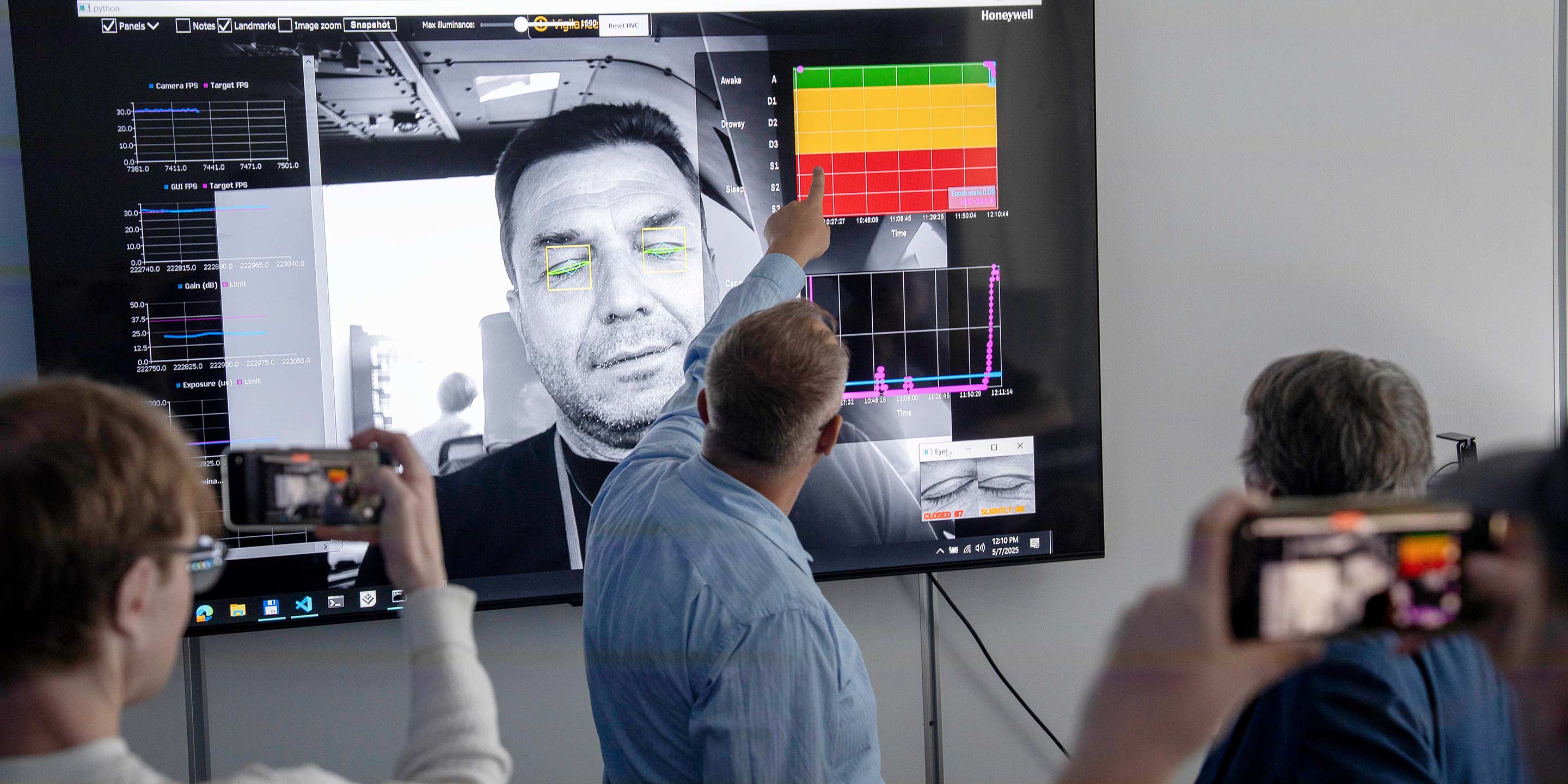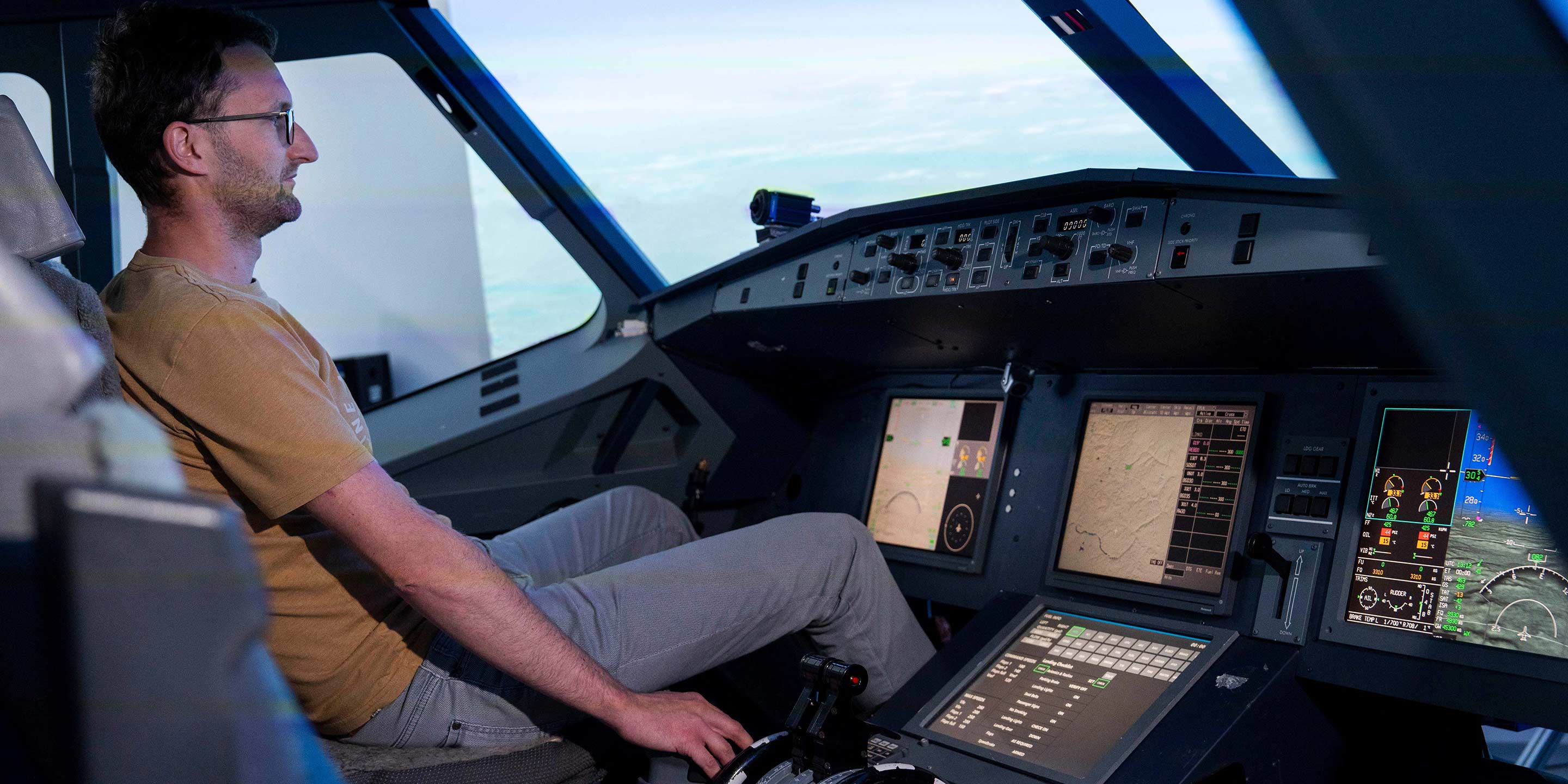-
Location
-
North America
-
Latin America
-
Asia Pacific
- |
- Sales & Service Partners
- |
-
Select Shopping Cart Account
Choose the account number for your parts ordering shopping cart. Your current cart will be saved when switching accounts.
Account# Account Name City Zip/Post Code CANCELPROCEEDMy Account
-
Industries
Industries
-
Location
-
North America
-
Latin America
-
Asia Pacific
- |
- Sales & Service Partners
- |
You are browsing the product catalog for
You are viewing the overview and resources for
- Blogs
- Detecting Pilot Drowsiness to Make Flying Safer
Your browser is not supported.
For the best experience, please access this site using the latest version of the following browsers:
By closing this window you acknowledge that your experience on this website may be degraded.
Detecting Pilot Drowsiness & Making Flying Safer
Detecting Pilot Drowsiness & Making Flying Safer


Pilot fatigue is a serious issue. As many as 56% of pilots have fallen asleep while on duty according to a British Airline Pilots Association (BALPA) study. Additionally, 29% of those pilots woke up to discover their co-pilot was also asleep. While these numbers are an obvious cause for concern, even simple pilot drowsiness poses a serious threat to air transport safety, as do sudden medical episodes which, although less likely, are even more dangerous.
“We believe that this technology has the potential to become the new standard in preventing the risk associated with pilot drowsiness,” says Bohdan Blaha, Senior Engineering Supervisor for Honeywell International in the Czech Republic, where this technology is currently being developed with co-funding from the European Union.
Now in the late stages of testing, Honeywell’s Pilot State Monitoring technology will soon be able to detect drowsiness, sleep and other conditions that reduce a pilot’s ability to safely fly an aircraft.
How it works
The pilot's condition during flight is monitored by a system that includes a camera, motion detectors, body position, activity and other sensors. The signals are processed using machine-learning algorithms that assess physiological, behavioral and psychophysiological functions. If low pilot alertness or sleep is detected, a notification system is activated to warn of the risk and wake the pilot. In the interest of pilot privacy, no images from the camera or any other personal data are retained.


Capabilities Proven by Rigorous Testing
The technology has already been tested in a variety of conditions using variable amounts of lighting, heavy vibrations, hard landings, turbulence, multiple distances and a multitude of camera angles. Honeywell has tested pilots of various ages, genders and ethnicities to allow the system to work as intended in any situation. Simulator tests have even included controlled sleep deprivation.
Senior Engineering Supervisor Blaha speaks to the results, “The simulator tests to date have shown that Pilot State Monitoring can reliably detect drowsiness, sleep and any serious indisposition that prevents a pilot from completing a flight.”
After successful testing on Bonanza, Honeywell Falcon F900 and Honeywell B757 craft, the scope was expanded in 2025 to include an Embraer 170. That success has spurred advancement to the next level, as one of the world’s leading carriers is currently testing the technology in real-life operations aboard an Airbus 321. The next phase is planned to be aboard a Boeing 787 aircraft.
This is Only the Beginning
Pilot State Monitoring is a key part of the European DARWIN project, which links artificial intelligence and human decision-making in aviation. The project, led by Honeywell scientists and engineers in Brno, Czech Republic, aims to increase safety of operations.
In the second phase of the project, a team within the Autonomy department of Jolana Dvorská, Avionics Architect for Honeywell International is developing reliable AI assistants that will be able to support pilots in all situations including critical ones, thereby significantly improving flight safety. The first results of this part of the project will be presented later this year and into next year.
Copyright © 2025 Honeywell International Inc.
Maximum File Size
Maximum Files Exceeded
Due to inactivity you will be logged out in 000 seconds.
Maximum File Size
Maximum Files Exceeded
Your documents are ready for you. Please click here to open.
Maximum File Size
Maximum Files Exceeded
There is an issue with invoices zip file download. Please go back and try again later. Thanks!
Maximum File Size
Maximum Files Exceeded
Your orders excel is ready for download. Please click here to download.
Maximum File Size
Maximum Files Exceeded
There is an issue with orders excel file download. Please go back and try again later. Thanks!

